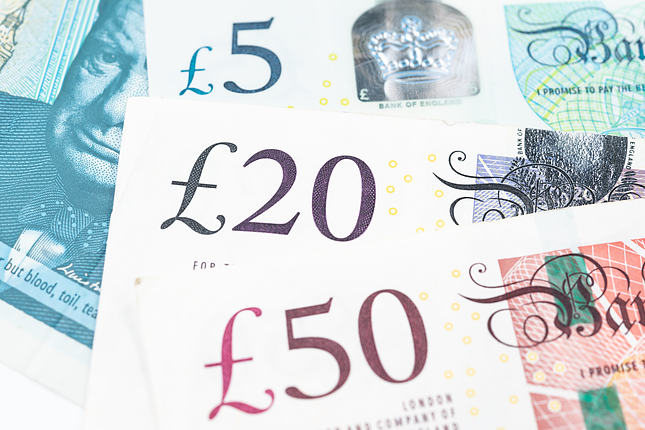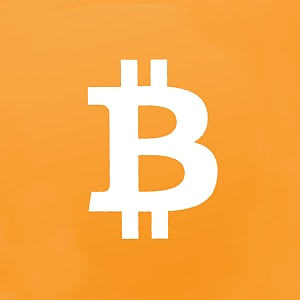- The US Dollar recovers and nearly erases all losses for this Tuesday.
- Fed's Kashkari surprises markets with hints of a rate hike.
- The US Dollar Index heads back to 104.50.
The US Dollar (USD) bounces on Tuesday after the US opening bell with help from Federal Reserve Bank of Minneapolis President Neel Kashkari. Fed's Kashkari floated the idea that a rate hike might still be in the cards. This goes outright against the multiple comments markets saw last week from several Fed speakers. Markets need to bear in mind as well that Fed's Kashkari is a non-voter for this year.
On the economic data front, the US Treasury will auction four bond issuances in several maturities across the yield curve, and three US Federal Reserve (Fed) speakers are set to make comments on Tuesday.
Daily digest market movers: Kashkari big hero
- The March Housing Price Index for March was underperforming, with February's number coming in at 1.2% against only 0.1% for March, where 0.5% was expected.
- At 14:00 GMT, May’s Conference Board Consumer Confidence was released, with the previous number at 97.0 and 96.0 forecasted, the actual number jumped back above 100.00 t 102.00.
- At 14:30 GMT, the Dallas Fed released its Manufacturing Business Index for May. April’s data showed a contraction to -14.5, with an improvement to -12.5 forecasted for May. Though the actual number came in at -19.4, undershooting the survey number and contracting further against April's data.
- The US Treasury is having four bond auctions on Tuesday:
- At 15:30 GMT, both a 3-month and a 6-month bill are to be allocated.
- At 17:00 GMT, a 2-year and a 5-year note are to be issued.
- Three Fed speakers are lined up on Tuesday:
- Federal Reserve Governor Michelle Bowman already issued comments on Tuesday morning during Asian hours. She iterated it continues to remain important that the Fed sticks to reducing its balance sheet.
- Federal Reserve Bank of Minneapolis President Neel Kashkari said that a rate hike is not off the table seeing the job market tightness and underlying inflation forces with wages still high. Although, the odds of a Fed raising rates are very low, Fed's Kashkari said as final comment.
- Around 17:00 GMT, Federal Reserve Bank of San Francisco President Mary Daly participates in a panel discussion about Artificial Intelligence (AI) and the Economy at the Federal Reserve Bank of San Francisco, together with Federal Reserve Governor Lisa Cook.
- Equities got spooked by the comments from Fed's Kashkari and all fell in the red in both European and US trading.
- The CME Fedwatch Tool is pricing 99.1% for no change in the policy rate for June. September futures are in a stalemate, where it is a neck-and-neck race with 48.4% chances for keeping rates unchanged against 46.4% chances for a 25 basis points (bps) rate cut and 4.7% chances for even 50 bps rate cut. A marginal 0.4% price in an interest rate hike.
- The benchmark 10-year US Treasury Note trades around 4.48% in a tight range ahead of the US opening bell.
US Dollar Index Technical Analysis: Kashkari spooks markets
The US Dollar Index (DXY) is playing a dangerous game on Tuesday, testing important support levels and retreating for a third day in a row. Ahead of the US opening bell, the DXY is testing the 200-day Simple Moving Average (SMA) at 104.41. With the 100-day SMA very close, at 104.32, much room opens up for a nosedive should markets start to unwind their Dollar long positions.
On the upside, the DXY index needs to reclaim key levels it lost last week: the 55-day Simple Moving Average (SMA) at 104.88 and the 105.00 big round level. Further up, the following levels to consider are 105.12 and 105.52.
On the downside, the 200-day SMA at 104.41 and the 100-day SMA around 104.32 are the last line of defence. Once that level snaps, an air pocket is placed between 104.30 and 103.00. Should the US Dollar decline persist, the low of March at 102.35 and the low from December at 100.62 are levels to consider.
Central banks FAQs
Central Banks have a key mandate which is making sure that there is price stability in a country or region. Economies are constantly facing inflation or deflation when prices for certain goods and services are fluctuating. Constant rising prices for the same goods means inflation, constant lowered prices for the same goods means deflation. It is the task of the central bank to keep the demand in line by tweaking its policy rate. For the biggest central banks like the US Federal Reserve (Fed), the European Central Bank (ECB) or the Bank of England (BoE), the mandate is to keep inflation close to 2%.
A central bank has one important tool at its disposal to get inflation higher or lower, and that is by tweaking its benchmark policy rate, commonly known as interest rate. On pre-communicated moments, the central bank will issue a statement with its policy rate and provide additional reasoning on why it is either remaining or changing (cutting or hiking) it. Local banks will adjust their savings and lending rates accordingly, which in turn will make it either harder or easier for people to earn on their savings or for companies to take out loans and make investments in their businesses. When the central bank hikes interest rates substantially, this is called monetary tightening. When it is cutting its benchmark rate, it is called monetary easing.
A central bank is often politically independent. Members of the central bank policy board are passing through a series of panels and hearings before being appointed to a policy board seat. Each member in that board often has a certain conviction on how the central bank should control inflation and the subsequent monetary policy. Members that want a very loose monetary policy, with low rates and cheap lending, to boost the economy substantially while being content to see inflation slightly above 2%, are called ‘doves’. Members that rather want to see higher rates to reward savings and want to keep a lit on inflation at all time are called ‘hawks’ and will not rest until inflation is at or just below 2%.
Normally, there is a chairman or president who leads each meeting, needs to create a consensus between the hawks or doves and has his or her final say when it would come down to a vote split to avoid a 50-50 tie on whether the current policy should be adjusted. The chairman will deliver speeches which often can be followed live, where the current monetary stance and outlook is being communicated. A central bank will try to push forward its monetary policy without triggering violent swings in rates, equities, or its currency. All members of the central bank will channel their stance toward the markets in advance of a policy meeting event. A few days before a policy meeting takes place until the new policy has been communicated, members are forbidden to talk publicly. This is called the blackout period.
Information on these pages contains forward-looking statements that involve risks and uncertainties. Markets and instruments profiled on this page are for informational purposes only and should not in any way come across as a recommendation to buy or sell in these assets. You should do your own thorough research before making any investment decisions. FXStreet does not in any way guarantee that this information is free from mistakes, errors, or material misstatements. It also does not guarantee that this information is of a timely nature. Investing in Open Markets involves a great deal of risk, including the loss of all or a portion of your investment, as well as emotional distress. All risks, losses and costs associated with investing, including total loss of principal, are your responsibility. The views and opinions expressed in this article are those of the authors and do not necessarily reflect the official policy or position of FXStreet nor its advertisers. The author will not be held responsible for information that is found at the end of links posted on this page.
If not otherwise explicitly mentioned in the body of the article, at the time of writing, the author has no position in any stock mentioned in this article and no business relationship with any company mentioned. The author has not received compensation for writing this article, other than from FXStreet.
FXStreet and the author do not provide personalized recommendations. The author makes no representations as to the accuracy, completeness, or suitability of this information. FXStreet and the author will not be liable for any errors, omissions or any losses, injuries or damages arising from this information and its display or use. Errors and omissions excepted.
The author and FXStreet are not registered investment advisors and nothing in this article is intended to be investment advice.
Recommended content
Editors’ Picks

GBP/USD tumbles to 14-month lows near 1.2250
GBP/USD accelerates its decline and hits the lowest level in over a year near 1.2250 in European trading on Thursday. The pair feels the heat from the UK bond market sell-off, with the 10-year Gilt yields at the highest since August 2008. Extended US Dollar strength and a bearish daily technical setup exaerbates the pain.

EUR/USD holds losses near 1.0300 ahead of Eurozone Retail Sales data
EUR/USD trades with mild losses for the third consecutive day at around 1.0300 in the European session on Thursday. Encouraging German Industrial Production data for November fail to lift the Euro amid a sustained US Dollar demand. Eurozone Retail Sales and Fedspeak are next in focus.

Gold price moves back closer to multi-week top; modest USD strength might cap gains
Gold price turns positive for the third straight day and draws support from a combination of factors. Geopolitical risks, trade war fears and retreating US bond yields lend support to the XAU/USD pair.

BNB poised for a decline on negative Funding Rate
BNB price hovers around $696.40 on Thursday after declining 4.58% in the previous two days. BNB’s momentum indicators hint for a further decline as its Relative Strength Index and Moving Average Convergence Divergence show bearish signals.

Bitcoin edges below $96,000, wiping over leveraged traders
Bitcoin's price continues to edge lower, trading below the $96,000 level on Wednesday after declining more than 5% the previous day. The recent price decline has triggered a wave of liquidations across the crypto market, resulting in $694.11 million in total liquidations in the last 24 hours.

Best Forex Brokers with Low Spreads
VERIFIED Low spreads are crucial for reducing trading costs. Explore top Forex brokers offering competitive spreads and high leverage. Compare options for EUR/USD, GBP/USD, USD/JPY, and Gold.